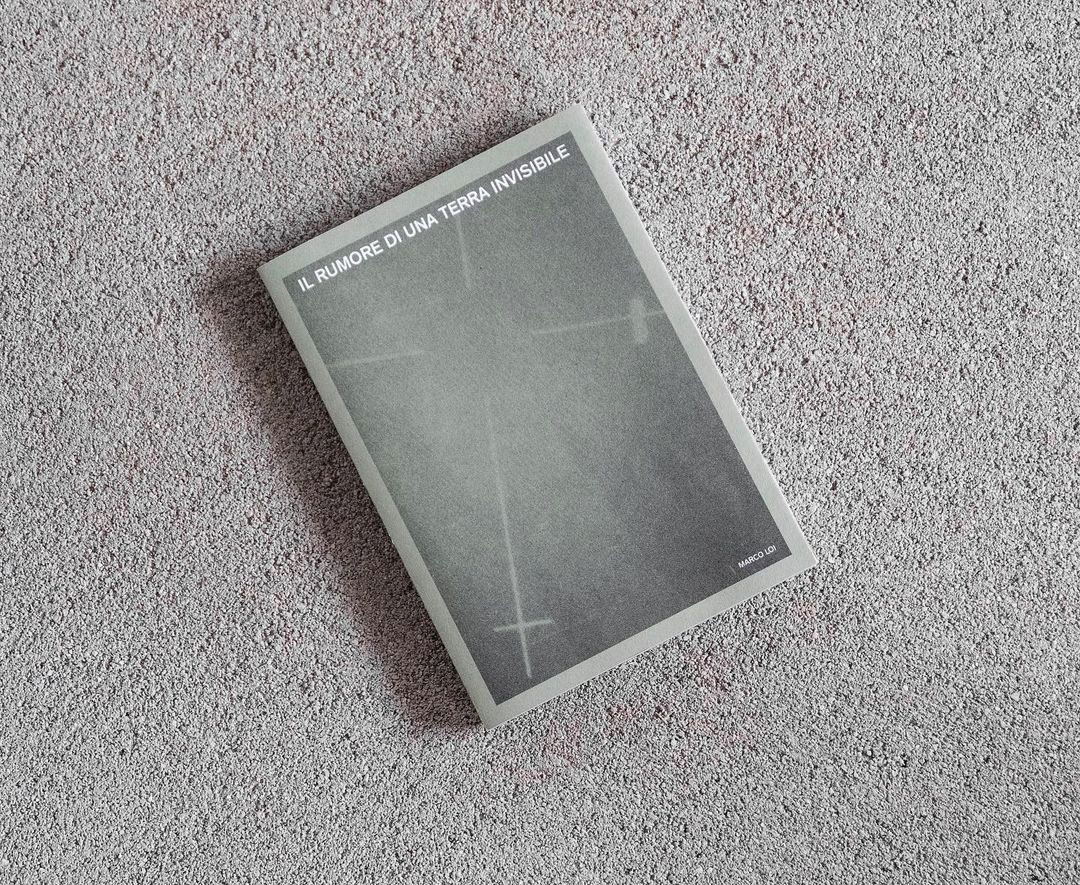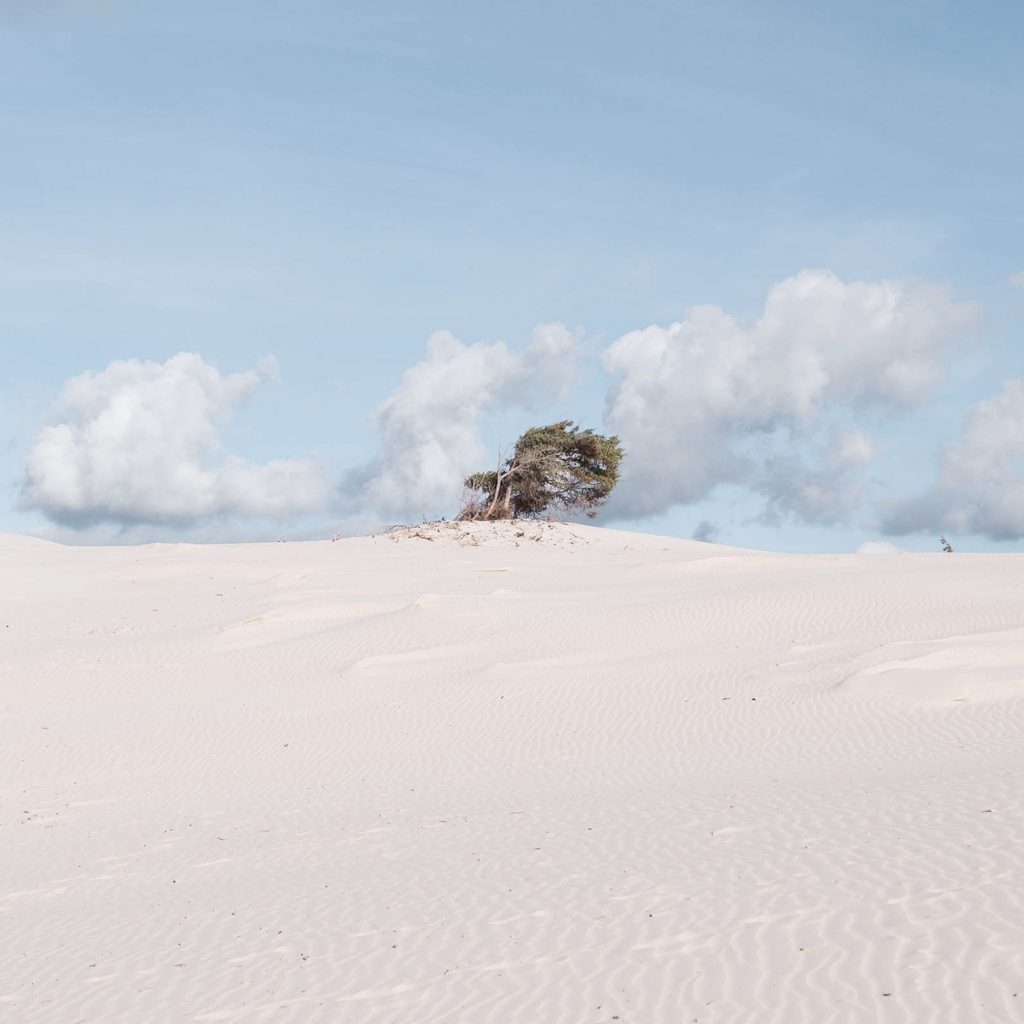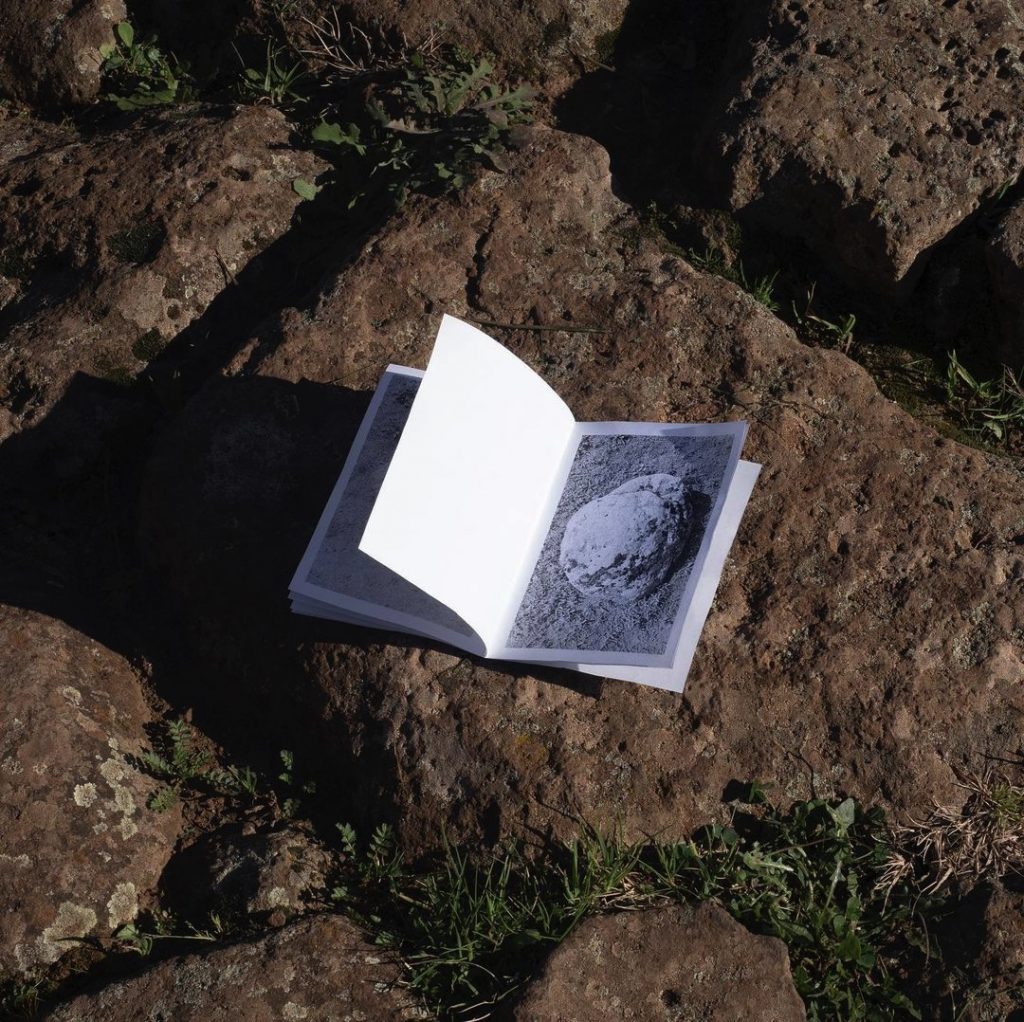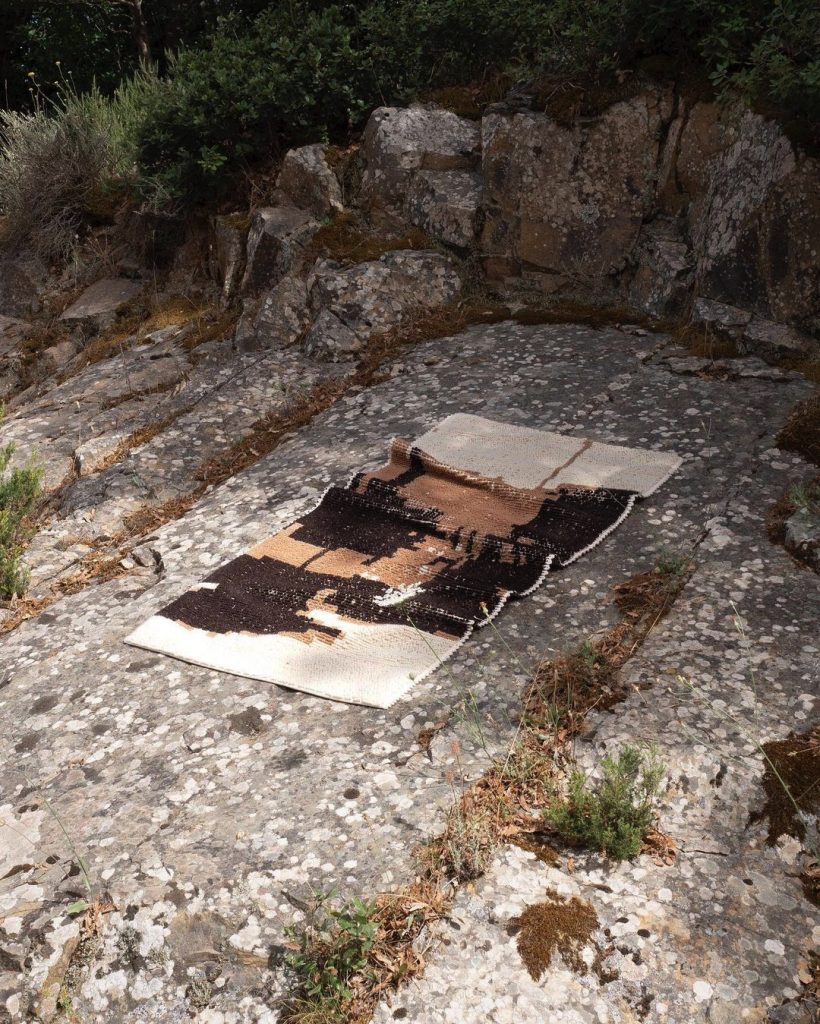Marco Loi investigates his land between art and geopolitics

Marco Loi, artist and designer, began his creative journey from graphic design and visual communication to move towards a personal research that moves freely between different approaches and media, including photography, weaving, and algorithm. His works deal with places with a coherent expression, capable of revealing the intimate connections of human relations and nature, through a thought that investigates their boundaries, the inaccessible and the invisible. We interviewed Marco last August during our trip to Sardinia X Calcúra.

We wanted to start by asking you to introduce yourself, and to tell us through your background what languages characterise your artistic production to date.
I am currently studying Geo design at the Design Academy in Eindhoven. It is a master’s programme that tries to find relationships between design and geopolitical issues through art and other languages.
I am Marco Loi and I am originally from Samugheo, a very small town in the centre of Sardinia in the province of Oristano. I studied graphic design and visual communication at ISIA in Urbino. The three-year course gave me the opportunity to put together different languages and this also allowed me to explore photography. There was a year when I was preparing a photographic thesis on militarisation in Sardinia, so I was in Samugheo for a long time. I got very close to weaving, precisely because my mother is a weaver, so I had always seen this language at home.
And that is when I came up with a project to develop in Sardinia, a project on the Rio piscinas, a river polluted by heavy metal spills from mines. So I thought that weaving could amplify the project by using toxic sludge to colour the wool. So I started a project in a completely experimental way but the world opened up because I realised what kind of relationship there could be with a traditional technique, which I only saw at home. It was something I had only considered as marginal.
Then with the Nocefresca residency in Milis, I carried out a more conceptual experimentation using this technique. With the help of a programmer, Marta Fioravanti, we developed an algorithm to combine photography with sound that would then have as its final output a textile work. From that moment on, I realised how experimentation with these three techniques could also be the key to continuing my personal research.

How is your interest in political issues woven into your work as an artist?
This interest in certain topics is the result of my artistic career, which goes hand in hand with another path as an activist on different issues. The first time I did a project at ISIA that could be defined as political was during a sociology course where we were asked to work on the concept of historical memory and moment. I have always dealt with socio-political or geopolitical issues. Besides a personal interest, I think it is interesting to see the project as a tool to access certain issues, question them.
I like that through my work a common awareness of these things can be created, that the user can then question himself and perhaps become an ally to certain issues.

Your thesis work The Noise of an Invisible Land is structured as research on military areas in Sardinia. What are the reflections that guided it?
I approached militarisation issues in Sardinia at the beginning of my three-year course at Urbino, then reading articles, books and scientific reports on military activity in Sardinia. It is something I have always read and on which I have formed a personal opinion. This then became a bit of a central point of the whole thesis, namely trying to represent the invisible, specifically military bases. So it was all about creating an imagery that could overcome this limit of invisibility and unrepresentability of these military bases in Sardinia precisely because one could not enter inside.
Underlying this was an awareness of this issue that pushed me to investigate and try to tell something that we do not see from the outside. Even if we get close to these places, we are not able to understand what goes on inside, both as an activity and as an extended system.

In your projects one can trace a focus on the themes of border, limit and margin. How much is this interest influenced by coming from an island?
I always thought that the island was made up of micro-islands, where sometimes the relational dynamics get a little tight. And that is perhaps the reason that prompted me most of all to leave it. Returning to Sardinia, I perceived a very strong attachment to the island, a well-being, a bond that also shapes my way of designing, a mutual and continuous contamination. Over the years because it has been a hate and a love, then the fact that many of my projects focus on the island makes me think how necessary it is to tell certain things.
Regarding the photography and the landscape aspect, I can say that both can be linked to this. It is not a photography related to the landscape aspect of the island itself, but the moment you approach themes of a certain context, your language will necessarily be an expression of the same.
This fascination, which then characterises the latest reading I have given to this land, comes from my interest in weaving and other craft techniques. I perceived this potential in order to weave it into my work.I realised the strength of this project when I was just missing trying to explain that technique and what I was trying to do to people It is obvious that when you put an algorithm into a technique that has always been manual, such as weaving, people do not expect it.
However, at a time when we perceive that many traditional techniques are being lost, a way to preserve them could also be this. I find it very interesting in general to seek contaminations with such an ancient technique as pibiones weaving, and other contemporary languages. Also in the future, I’d like to create relationships, between inside and outside, tradition and innovation, local and global. I think contamination is also a key to living in these places.

I mentioned activism and I think the key is to question our position in the world every time we are confronted with something unknown. This has greatly influenced my research project in which I questioned myself a lot about where I stand in relation to so many things that are too big of me and unknown. In fact, I think a lot about the concept of border. It was interesting to start from the geographical conformation of the island with the element of water.
It is interesting to try to understand how many boundaries are present around us. I find the border in my work both in terms of militarisation, as an impassable limit, whether it is physical, psychological or ideological. There is always however an attempt to want to overcome it. Even when I have dealt with other topics, such as homophobia, there is always a boundary with getting to know the other element in front of us. So my awareness may have started from the fact that I know I live in such a small place, surrounded by barely permeable barriers.
Tell us about Cumentzu.
It was a project born out of a trip to Kenya in 2017. A responsible tourism trip where I went to different communities where HIV-positive children, among others, are housed. So I was there and leaned on the Osvic association in Oristano, with which a professional relationship was created, an interesting ongoing exchange. When I later returned to Sardinia, they asked me to propose a photography course for migrants.
I said I would accept with the understanding that I would not be doing a photography course, but a course on the image and our gaze, on how to look around. Then also with the interaction of the photographic medium but without necessarily taking pictures but also using archive images to compose narratives. Every day we went for walks collecting lots of images. We did readings also reflecting on concepts such as diversity. With the support of the images, each of them composed a narrative about their own life, story, journey.
